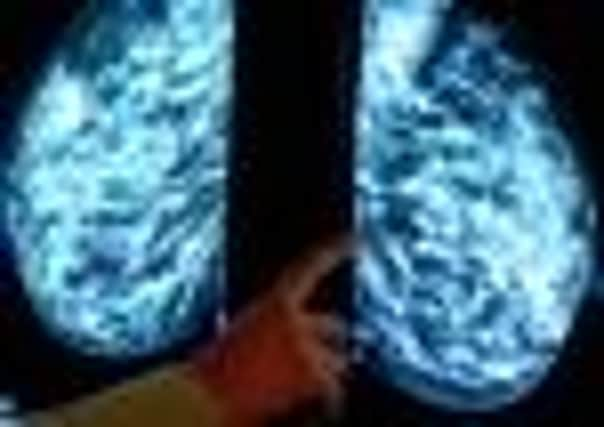Video: Breast cancer ‘digs escape route’ into body


• Scientists have found evidence that breast cancer cells ‘puncture’ neighbouring tissues, offering hope for new treatments
• Movement of cancer cells has also been captured on 3D video
Advertisement
Hide AdAdvertisement
Hide AdScientists at Beatson Institute in Glasgow say finding the “completely new process” should help develop more effective treatments for breast cancer.


The team is the first to discover that the cancer cells puncture holes into neighbouring tissues and crawl though the spaces to spread around the body.
The Scottish experts found the cancer cells invade their surrounding environment by pushing and pulling into the newly created spaces. And, in a world first, they have been able to capture the movement for the first time on 3D video.
Dr Julie Sharp, Cancer Research UK’s senior science information manager, said: “This important research reveals fresh understanding of how cancer spreads, which will help scientists to translate discoveries into effective treatments.
“Most cancer deaths are caused when cancer cells travel to new sites within the body and grow as secondary tumours, so there’s an urgent need to find a way to stop this happening.
“This is groundbreaking research into how cancer cells move around the body. Finding the best ways to tackle cancer spread will save thousands more lives every year.”
Breast cancer accounts for 30 per cent of all Scotland’s cancers, with just over 5,000 women diagnosed every year.
In a series of tests scientists at the Beatson Institute, which is funded by Cancer Research UK, discovered there are high levels of a protein called N-WASP in breast cancer cells.
Advertisement
Hide AdAdvertisement
Hide AdThey discovered the protein helps form branches with sharp points on the cell surface by rearranging the cell’s internal “skeleton”, made of a protein called actin. Actin is essential in all cells for structural support, movement and shape changes. The branches with sharp points – called pseudopodia – are able to grab onto and poke holes into the supporting tissue in-between cells.
The Glasgow-based team found that enzymes can attach to the branches and dig into a person’s tissues and create even larger spaces – which cancer cells can spread into. The scientists also found that if they removed the protein N-WASP from cells it resulted in blunter, shallower protrusions – reducing the ability of the cells to puncture the area and spread.
Dr Laura Machesky, who led the research at the Beatson, said: “These exciting results reveal a completely new process by which cells can break away from a tumour to invade surrounding spaces and spread.”
Latest figures show one in nine women in Scotland will be diagnosed with breast cancer, a figure set to rise as the population ages.
Recovery rates are high,
with about eight in ten women surviving it for five years or more.
Doctors say the survival rates could improve further with future breakthrough treatments that can stop cancer spreading in the body.